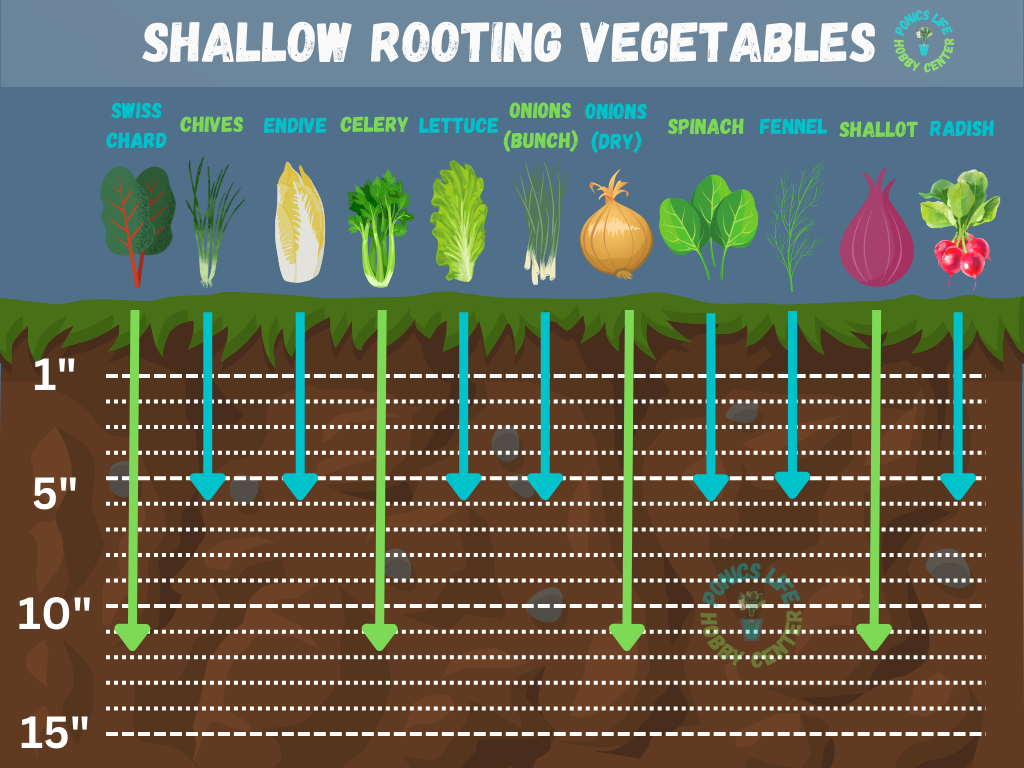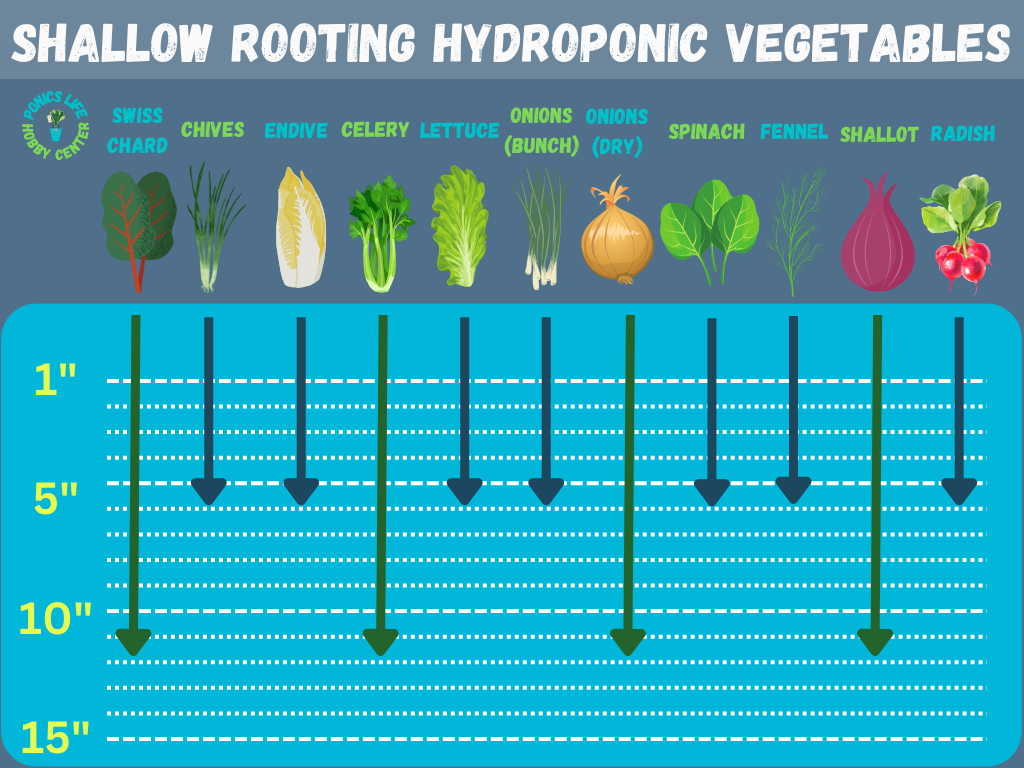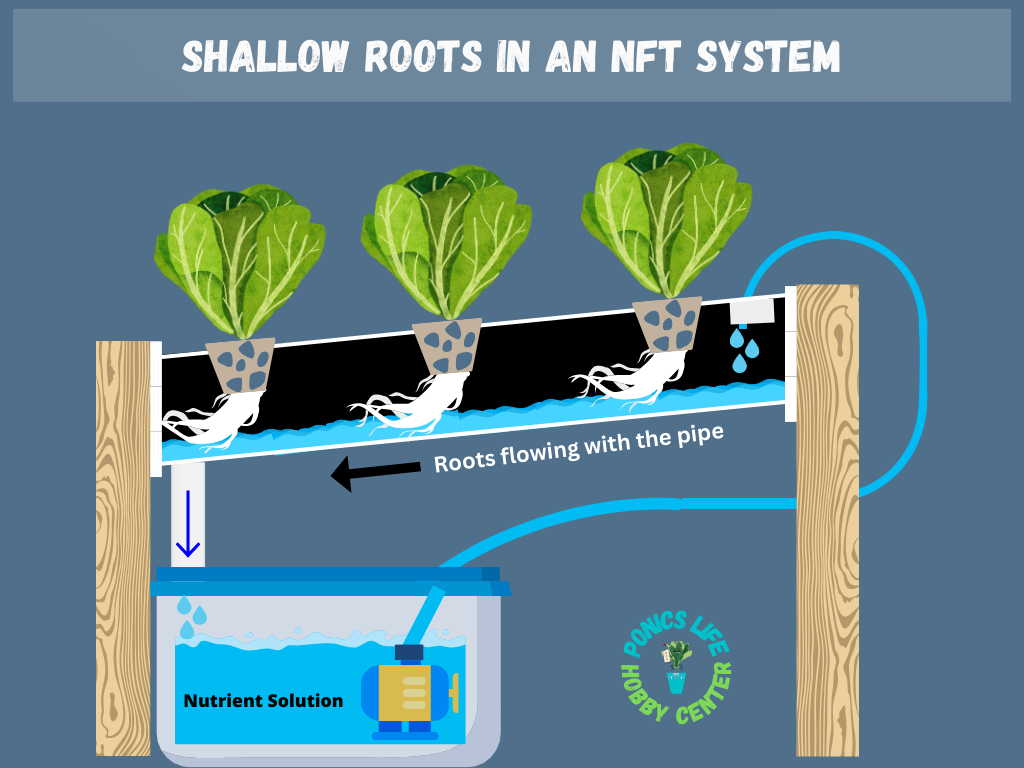Shallow Root Vegetables
Shallow root vegetables, sometimes overlooked in favor of their deeper-rooted counterparts, hold a special place in the realm of gardening and gastronomy. Thriving just below the surface, these plants are uniquely adapted to maximize the nutrients from the topsoil layers, making them ideal for urban gardens, raised beds, or areas with compacted ground. Their quick growth cycles, combined with their rich nutrient profiles, make them a valuable addition to any garden, offering both rapid gratification for the cultivator and a nutrient-dense feast for the table.
As we peel back the layers of soil, the intricate nature and advantages of these near-surface vegetables emerge more clearly. Let’s take a closer look at their “effective root zone” to truly grasp the richness they bring to our gardens and plates.
Best Shallow Root Vegetables
Shallow-rooted vegetables root to a depth of 6 to 12 inches, making them ideal for container gardening or gardens with limited soil depth. Some of the best shallow-rooted vegetables include: Swiss Chard, Chives, Endive, Celery, Lettuce, Onions (bunch), Onions (dry), Spinach, Fennel, Shallot, and Radish.

Effective Root Zone (in inches) for Shallow Rooted Vegetables
The Effective Root Zone (ERZ) is the depth within the soil where the majority of a plant’s active roots absorb water and nutrients. For shallow-rooted vegetables, this zone is typically measured in inches (in the US) and represents the crucial layer for optimal growth and health.
| Vegetable/Crop | Effective Root Zone Depth (in inches) |
|---|---|
| Celery | 12 (31 cm) |
| Chives | 6 (16 cm) |
| Dandelion | 6 (16 cm) |
| Endive | 6 (16 cm) |
| Escarole | 6 (16 cm) |
| Fennel | 6 (16 cm) |
| Lettuce | 6 (16 cm) |
| Onions, bunch | 6 (16 cm) |
| Onions, dry | 12 (31 cm) |
| Radish | 6 (16 cm) |
| Shallots | 12 (31 cm) |
| Spinach | 6 (16 cm) |
| Swiss Chard | 12 (31 cm) |
Effective Root Zone (in inches) for Shallow Rooted Fruits
| Fruit/Crop | Effective Root Zone Depth (in inches) |
|---|---|
| Cranberries | 6 (16 cm) |
| Strawberries | 6 (16 cm) |
Medium Root Vegetables
Medium-rooted vegetables are those that have a root system extending moderately deep into the soil, allowing them to access water and nutrients from a larger volume of soil than shallow-rooted varieties. This intermediate rooting depth provides them with a balance between the resilience of deep-rooted plants and the quicker harvesting time of shallow-rooted ones.
| Vegetable/Crop | Effective Root Zone Depth (in inches) |
|---|---|
| Beets | 18 (46 cm) |
| Broccoli | 18 (46 cm) |
| Cabbage | 18 (46 cm) |
| Carrots | 18 (46 cm) |
| Cauliflower | 18 (46 cm) |
| Collards | 18 (46 cm) |
| Eggplant | 18 (46 cm) |
| Horseradish | 18 (46 cm) |
| Kale | 18 (46 cm) |
| Kohlrabi | 18 (46 cm) |
| Okra | 18 (46 cm) |
| Peas | 18 (46 cm) |
| Peppers | 18 (46 cm) |
| Potatoes | 18 (46 cm) |
| Rutabagas | 18 (46 cm) |
| Snap Beans | 18 (46 cm) |
| Sweet Potatoes | 18 (46 cm) |
| Turnips | 18 (46 cm) |
Shallow Root Vegetables for Hydroponics
While the “Effective Root Zone” doesn’t really apply to hydroponics (since every part of the root is touching the nutrient solution), the “root depth” of vegetables shouldn’t change all that much (comparatively). But there are some notable differences: (1) roots will spread out more if given room, (2) the healthiness of the roots will affect size and appearance, and (3) roots will grow where the water takes them.

For example, if growing in a Nutrient Film Technique (NFT) system (see image below), the roots will grow whichever direction the water is flowing. If the “root area” isn’t big enough, they can sometimes bunch up and fuse together.

Questions and Answers (Q&A)
Navigating the world of gardening can be both thrilling and overwhelming, especially when you’re deciding what to plant. Dive into our Q&A section below to discover the simplicity and allure of shallow root vegetables, perfect for novice gardeners and those with limited space.
Where does this information come from?
This information (to exclude the hydroponics info) comes from the University of Nebraska-Lincoln Extension Institute of Agriculture and Natural Resources, Water Wise, Vegetable and Fruit Production guide. One thing to keep in mind is that the above images reference the “effective root zone” (ERZ) depth, which doesn’t necessarily depict the exact length (or potential length) of roots. The actual root depth may be longer as some other academic sources highlight.
What size containers should I use for vegetables that have small roots?
As expected, small-root vegetables grow best in small to medium-sized containers. To find out which ones are best, explore our quick guide on container/vegetable pairings which can be accessed here: Vegetable Container Size Standards (With Chart)
Why should I consider growing shallow root vegetables?
There are several reasons to consider growing these types of vegetables: (1) They require less soil, making them ideal for container gardening or urban settings with limited space, (2) They usually mature faster than deep-rooted vegetables, (3) Soil preparation is often simpler since you only need to work the top few inches, and (4) It’s easier to manage pests and diseases due to their quick growth cycle.
How do I prepare the soil for these vegetables?
Focus on enriching the top 4-6 inches with compost or organic potting soil. Ensure the soil is loose and well-draining, as waterlogged soil can lead to root rot.
How often should I water shallow root vegetables?
Because their roots are closer to the surface, these vegetables may require more frequent watering, especially during dry spells. It’s essential to keep the soil consistently moist but not waterlogged. A layer of mulch can help retain moisture.
Are there any specific challenges with growing shallow root vegetables?
Some challenges include: (1) They can dry out faster due to their shallow roots, (2) They might be more susceptible to surface pests like slugs and snails, and (3) Some, like lettuce, can bolt (flower and set seed) quickly in hot weather, which can affect their taste.
How do I harvest shallow root vegetables?
Most shallow root vegetables can be harvested by gently pulling them out of the ground. For leafy greens like lettuce or spinach, you can pick outer leaves as needed, allowing the center of the plant to continue growing.
Are shallow root vegetables good for hydroponics?
Shallow root vegetables are perfect for hydroponics. They’re easy to manage, easy to control, and require very little root space (meaning the reservoir you use can be fairly small). If you’d like to learn more, check out our hydroponics hobby center!






